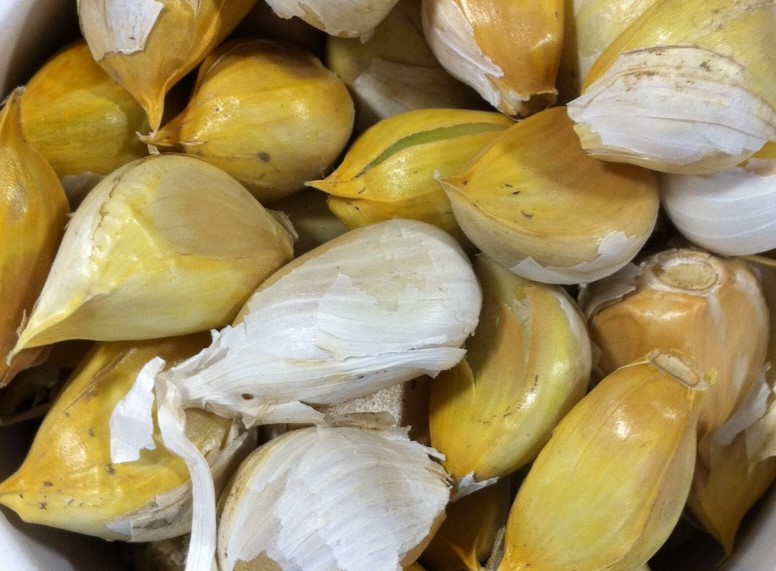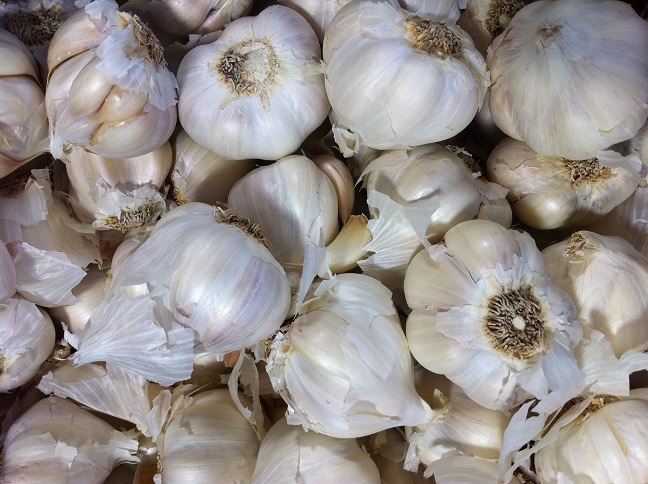Garlic and Elephant Garlic cloves are usually available in the garden centre from March through to June. Traditionally planted on the shortest day (21st June), planting sooner means they will be ready for harvest sooner in the early summer months.
Elephant Garlic

Elephant garlic is more closely related to leeks than garlic. It has a more milder taste and grows with a biennial habit. It alternates each year from forming one large bulb or a clump of smaller cloves. You get a single bulb in the year the plant doesn’t flower. In the alternative year, when the bulb flowers, it sets seed, and develops a clump of smaller cloves. If left in the ground, the cloves will repeat this cycle.
Printanor Garlic

A single clove of Printanor garlic, planted in a well fed soil should develop into a bulb of smaller cloves, in its first year. This is the most common garlic grown in New Zealand.
Planting Garlic and Shallots
If you want to grow beautiful garlic, generous amounts of well rotted animal manure and compost is the key. Garlic is a gross feeder, and needs lots of nutrients. Choose a well drained sunny spot that has had manure/compost, general fertiliser and lime dug in, before hand.
Break the bulb up, just before planting, and discard (or use in cooking) the smaller cloves, only planting the larger cloves. Plant the cloves with the narrow end up, just covered with soil (2-5 cm deep). This will depend upon the size of the clove. Garlic hates competition, so keep the planted area weed free and water/feed regularly. Reduce watering one month before harvest to improve the keeping quality. Remove flower stalks when they appear. This will reduce the size of the garlic bulbs when harvested.
Don’t wait for the bulbs to die completely before harvesting. Each leaf of the plant equates to a layer of skin around the bulb. The best time to lift garlic is when there are 5-6 green leaves.
Shallots are easy to manage and are more tolerant to a wide range of growing conditions, not to mention great for storage.
Plant in fertile soil enriched with compost and feed regularly. Shallots form clusters of bulbs around the original bulb, so plant with plenty of space. Shallot bulbs don’t need to be buried, just press into the soil leaving their necks poking out. Removing their outer skin before planting, will help prevent birds from damaging them, as they like to use the papery skins in nest building.
As with garlic, reduce feeding and watering, in the month of harvest. When the tops wither and turn brown, harvest on a dry day in late summer, plait if desired and let them dry over a few days before storage. With good airflow and low relative humidity, shallots should store for eight to 10 months.
